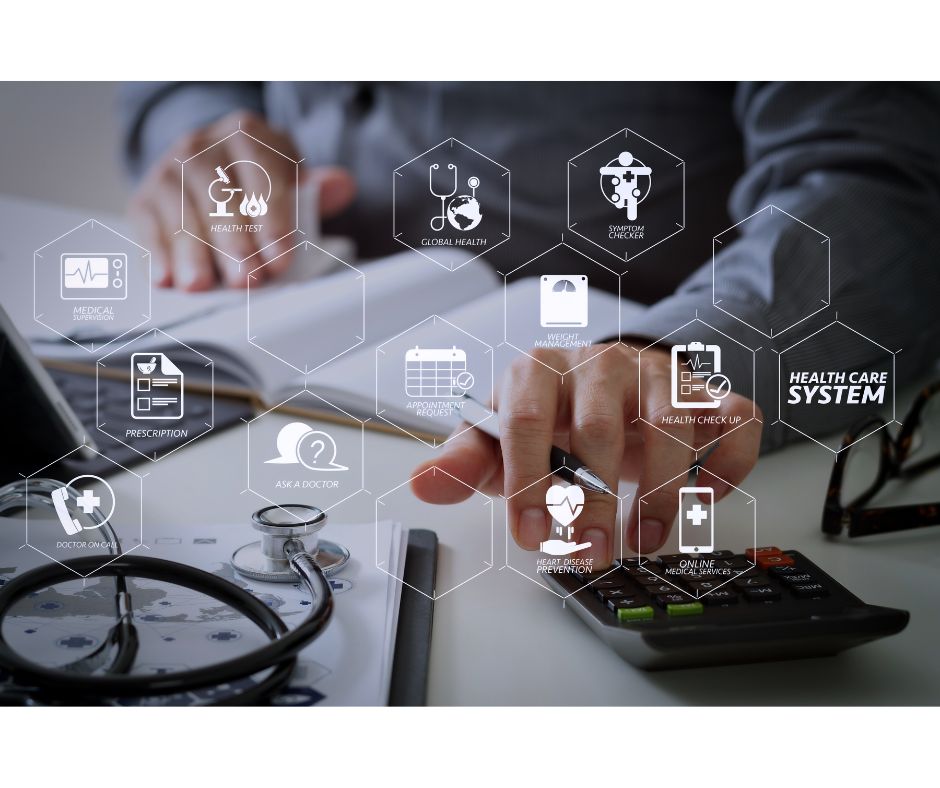Telehealth provides convenience and access to healthcare services, but it also brings challenges in protecting patient privacy, addressed by the Health Insurance Portability and Accountability Act (HIPAA). In 2023, the average cost of a healthcare data breach reached almost $11 million. This makes maintaining HIPAA compliance in telehealth even more serious.
In this article, we’ll explore the key aspects of HIPAA compliance in telehealth to ensure patient privacy and security, including practical guidance for healthcare providers and organizations.
Contents
- HIPAA in the Context of Telehealth
- Essential Components of HIPAA-Compliant Telehealth Platforms
- Best Practices to Secure Patient Information During Virtual Doctor Visits
- Patient Education and Consent in Telehealth
- Risk Assessment and Management in Telehealth
- Addressing HIPAA Violations in Telehealth
- Conclusion
- References
HIPAA in the Context of Telehealth
Definition of HIPAA and its relevance to telehealth
HIPAA, enacted in 1996, is a federal law that sets standards for protecting sensitive patient health information. It applies to healthcare providers, health plans, and healthcare clearinghouses, collectively known as “covered entities.” With the rise of telehealth, HIPAA’s relevance has expanded to include virtual healthcare services.
Note that HIPAA hasn’t had major updates in over 20 years. It was created before digital tools, when health records were mostly on paper, so there are gaps between current technology and privacy laws (Theodos & Sittig, 2021).
HIPAA rules that apply to virtual healthcare services

Two main HIPAA rules are particularly relevant to telehealth:
- The Privacy Rule: This rule establishes national standards for the protection of individuals’ medical records and other personal health information (PHI). PHI includes specific information about patients, such as their:
- Name, phone number, and social security number (SSN)
- Physical and email addresses
- Billing information
- Genetic information
- Name, phone number, and social security number (SSN)
- The Security Rule: This rule sets national standards for securing electronic protected health information (ePHI).
These rules require healthcare providers to implement appropriate safeguards to ensure the confidentiality, integrity, and availability of patient information during telehealth visits.
Common misconceptions about HIPAA compliance in telehealth
Let’s debunk some common myths about HIPAA and telehealth.
| Myth | Reality |
| Any video conferencing platform is HIPAA-compliant. | Only platforms that offer specific security features and sign a Business Associate Agreement (BAA) are HIPAA-compliant. |
| HIPAA compliance is solely the responsibility of the technology provider. | Healthcare providers are also responsible for ensuring HIPAA compliance in their telehealth practices. |
| HIPAA requirements are relaxed for telehealth. | Some temporary flexibilities were introduced during the COVID-19 pandemic, HIPAA rules apply equally to in-person and virtual care. |
Essential Components of HIPAA-Compliant Telehealth Platforms
To ensure HIPAA compliance, telehealth providers must use trusted vendors with software designed for healthcare. These vendors should have security measures in place for PHI, and be willing to sign a BAA.
Secure video conferencing features

An American Medical Association survey found that 85% of physicians were using video visits as part of their telehealth services, emphasizing the need for secure video conferencing solutions.
When choosing a telehealth platform, look for these security features:
- End-to-end encryption
- Secure waiting rooms
- Meeting passwords
- Host controls to manage participants
Encryption requirements for data transmission
HIPAA requires that all ePHI be encrypted during transmission. This includes:
- Video and audio streams during telehealth visits
- Chat messages exchanged during sessions
- Any files or images shared during the visit
- Secure messaging in patient portals
Encryption should use industry-standard protocols like AES-256 to ensure data security.
Access controls and user authentication measures

The access controls or permissions available to an employee should be based on their role.
The key features of robust access controls include:
- Multi-factor authentication
- Unique user IDs for each healthcare provider
- Automatic log-off after periods of inactivity
- Audit trails to track user activities
- Biometric login (fingerprint or facial recognition) for mobile apps
Best Practices to Secure Patient Information During Virtual Doctor Visits
With the right technology in place, the next step is to implement best practices for securing patient information during telehealth sessions.
Find a private environment for telehealth visits
Healthcare providers should:
- Use a private, quiet space for visits.
- Ensure that screens are not visible to others.
- Use headphones to prevent others from overhearing conversations.
Patients should also be advised to find a private location for their virtual visits.
Proper documentation and storage of telehealth records
A 2020 study found that 97% of healthcare organizations were using EHRs, underscoring the importance of secure electronic record-keeping (Holmgren et al., 2020).

Telehealth records should be treated with the same care as in-person visit records:
- Document visits thoroughly.
- Store records securely in HIPAA-compliant electronic health record (EHR) systems.
- Implement backup and disaster recovery plans for telehealth data.
EHRs with integrated telehealth programs certified by the Federal Health IT Governance are HIPAA-compliant.
Training staff on HIPAA compliance in virtual settings
Regular training is essential to maintain HIPAA compliance:
- Conduct annual HIPAA training for all staff.
- Provide specific training on patient privacy and security.
- Keep staff updated on the latest HIPAA guidelines and best practices.
Patient Education and Consent in Telehealth
Even with robust security measures, patients also share some responsibility for staying informed about their health needs.

Inform patients about telehealth privacy measures
Transparency builds trust. Inform patients about:
- The security measures in place to protect their information
- Any risks associated with telehealth visits
- Their rights under HIPAA (included in a Notice of Privacy Practices)
Get proper consent for virtual visits
Obtain and document patient consent:
- Use clear, easy-to-understand language in consent forms.
- Explain how telehealth differs from in-person visits.
- Allow patients to ask questions before giving consent.
Explain how patients can maintain privacy

Health apps and wearables can help people make better health choices, but they also create privacy issues as it stands today. If the tool isn’t part of a healthcare system, it doesn’t have to follow HIPAA guidelines.
Most of these tools aren’t covered by HIPAA privacy rules, and store health data in the cloud, which leaves a big gap in privacy protection. Users often don’t know or can’t control how their health data is stored, accessed, or used (Theodos & Sittig, 2021).
Patients play a crucial role in maintaining their own privacy. Some steps to safeguard their information include:
- Advise patients to use secure, private internet connections.
- Encourage the use of password-protected devices.
- Teach patients how to secure their end of the telehealth connection.
While providers and patients each have responsibilities with HIPAA, ongoing risk assessment and management are crucial for maintaining HIPAA compliance in telehealth.
Risk Assessment and Management in Telehealth
A 2022 Office for Civil Rights (OCR) report revealed that 77% of HIPAA violations were due to hacking incidents, highlighting the need for ongoing vigilance and updates.

Identify potential vulnerabilities in telehealth systems
Regular risk assessments help identify potential vulnerabilities:
- Conduct annual security risk analyses.
- Assess both technical and non-technical vulnerabilities (including audio-only telehealth visits).
- Consider risks specific to telehealth, such as unsecured patient devices or networks.
Be sure to include mobile device use in your risk assessment.
Develop a comprehensive risk management plan
Based on the risk assessment, develop a plan that includes:
- Prioritized list of identified risks
- Strategies to mitigate each risk
- Timeline for implementing security measures
- Assigned responsibilities for each action item
Regular audits and updates to ensure ongoing compliance
Compliance is an ongoing process:
- Conduct regular internal audits of telehealth practices.
- Stay updated on changing HIPAA regulations.
- Regularly update security measures and policies.
Addressing HIPAA Violations in Telehealth
Despite best efforts, HIPAA violations can occur. Let’s examine how to address these issues in telehealth settings.

Common HIPAA breaches in virtual healthcare settings
Be aware of these common telehealth HIPAA violations:
- Using non-secure video conferencing platforms
- Failure to get proper patient consent
- Inadequate security measures on provider or patient devices
- Improper storage or transmission of patient data
Steps to take in case of a data breach
If a breach occurs:
- Contain the breach to prevent further unauthorized access.
- Assess the extent and impact of the breach.
- Notify affected individuals within 60 days of discovery.
- Report the breach to the OCR as required by law.
- Implement corrective actions to prevent future breaches.
Penalties and consequences of non-compliance
HIPAA violations can result in severe penalties:
- Fines ranging from $100 to $50,000 per violation
- Maximum annual penalty of $1.5 million for repeated violations
- Potential criminal charges for willful neglect
In 2022, the OCR imposed over $6.3 million in HIPAA penalties.
Conclusion
HIPAA compliance in telehealth requires a comprehensive approach that addresses technology, processes, and people. HIPAA compliance is not just about avoiding penalties—it’s about building trust with your patients and providing high-quality care digitally.
By implementing robust security measures, educating staff and patients, and staying vigilant about potential risks, healthcare providers can leverage the power of telehealth while safeguarding patient privacy.
References
Alder, S. (2023). HIPAA Guidelines on Telemedicine. The HIPAA Journal. Retrieved from https://www.hipaajournal.com/hipaa-guidelines-on-telemedicine/
American Medical Association. 2021 Telehealth Survey Report. Chicago, IL: American Medical Association; 2021. Retrieved from https://www.ama-assn.org/system/files/telehealth-survey-report.pdf
Anguilm, C. (2022). How to Ensure Your Telehealth System is HIPAA Compliant. Medical Advantage. Retrieved from https://www.medicaladvantage.com/blog/ensure-your-telehealth-system-is-hippa-compliant/
Edemekong, P. F., Annamaraju, P., Haydel, M. J. (2024). Health Insurance Portability and Accountability Act. StatPearls. Treasure Island (FL): StatPearls Publishing.
Godard, R. (2022). HIPAA Compliance & Cell Phones: Staying Compliant While Staying Connected. I.S. Partners. Retrieved from https://www.ispartnersllc.com/blog/hipaa-compliance-cell-phones/
Guidance on How the HIPAA Rules Permit Covered Health Care Providers and Health Plans to Use Remote Communication Technologies for Audio-Only Telehealth. (n.d.). U. S. Department of Health and Human Services (HHS). Retrieved from https://www.hhs.gov/hipaa/for-professionals/privacy/guidance/hipaa-audio-telehealth/index.html
HIPAA Rules for telehealth technology. (2023). Health Resources & Services Administration (HRSA). Retrieved from https://telehealth.hhs.gov/providers/telehealth-policy/hipaa-for-telehealth-technology
Holmgren, A. J., Apathy, N. C., Adler-Milstein, J. (2020). Barriers to Hospital Electronic Public Health Reporting and Implications for the COVID-19 Pandemic. Journal of the American Medical Informatics Association; 27(8):1306-1309.
How to Make Your Telemedicine App HIPAA-Compliant. (n.d.). ScienceSoft. Retrieved from https://www.scnsoft.com/healthcare/telemedicine/hipaa-compliance
IBM Report: Half of Breached Organizations Unwilling to Increase Security Spend Despite Soaring Breach Costs. (2023). IBM. Retrieved from https://newsroom.ibm.com/2023-07-24-IBM-Report-Half-of-Breached-Organizations-Unwilling-to-Increase-Security-Spend-Despite-Soaring-Breach-Costs
Levitt, D. (2023). How does HIPAA apply to telehealth? Paubox. Retrieved from https://www.paubox.com/blog/how-does-hipaa-apply-to-telehealth/
Mohan, V. (2024). HIPAA Guidelines for Telehealth Companies. Sprinto. Retrieved from https://sprinto.com/blog/hipaa-compliance-for-telehealth/
Resource for Health Care Providers on Educating Patients about Privacy and Security Risks to Protected Health Information when Using Remote Communication Technologies for Telehealth. (n.d.). U. S. Department of Health and Human Services (HHS). Retrieved from https://www.hhs.gov/hipaa/for-professionals/privacy/guidance/resource-health-care-providers-educating-patients/index.html
Telehealth and HIPAA: HIPAA Compliant Teleconferencing Tools. (n.d.). Compliancy Group. Retrieved from https://compliancy-group.com/telehealth-and-hipaa-hipaa-compliant-teleconferencing-tools/
Theodos, K., & Sittig, S. (2021). Health Information Privacy Laws in the Digital Age: HIPAA Doesn’t Apply. Perspectives in Health Information Management; 18(Winter).
U.S. Department of Health and Human Services, Office for Civil Rights. 2022 HIPAA Compliance Report. Washington, DC: HHS; 2022. Retrieved from https://www.hhs.gov/hipaa/for-professionals/breach-notification/reports-congress/index.html
U.S. Department of Health and Human Services, Office for Civil Rights. Annual Report to Congress on HIPAA Privacy, Security, and Breach Notification Rule Compliance. Washington, DC: HHS; 2023. Retrieved from https://www.hhs.gov/hipaa/for-professionals/compliance-enforcement/reports-congress/index.html































